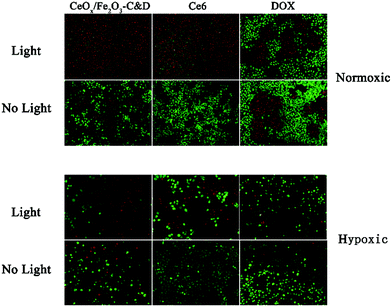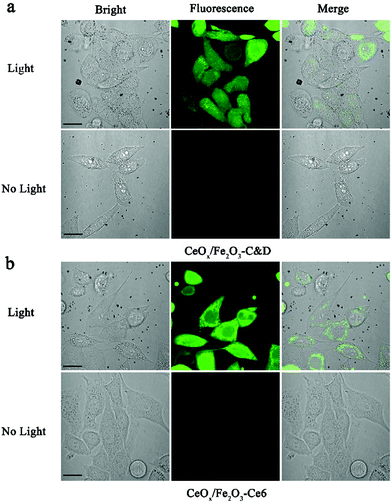 Open Access Article
Open Access ArticleCreative Commons Attribution 3.0 Unported Licence
Correction: A smart tumor-microenvironment responsive nanoprobe for highly selective and efficient combination therapy
Yifan
Fan
a,
Shanli
Guan
b,
Wenpeng
Fang
a,
Pengyun
Li
b,
Binbin
Hu
a,
Changfu
Shan
a,
Wenyu
Wu
a,
Jing
Cao
*a,
Bo
Cheng
*b,
Weisheng
Liu
a and
Yu
Tang
*a
aState Key Laboratory of Applied Organic Chemistry, Key Laboratory of Nonferrous Metal Chemistry and Resources Utilization of Gansu Province, College of Chemistry and Chemical Engineering, Lanzhou University, Lanzhou 730000, P.R. China. E-mail: tangyu@lzu.edu.cn; caoj@lzu.edu.cn
bMinistry of Education Key Laboratory of Cell Activities and Stress Adaptations, School of Life Sciences, Lanzhou University, Lanzhou 730000, P.R. China. E-mail: bocheng@lzu.edu.cn
First published on 14th February 2020
Abstract
Correction for ‘A smart tumor-microenvironment responsive nanoprobe for highly selective and efficient combination therapy’ by Yifan Fan et al., Inorg. Chem. Front., 2019, 6, 3562–3568.
The authors regret that the images for Fig. 4 and 5 in the original article were the wrong way around. The correct Fig. 4 and 5 are as shown below.
 | ||
| Fig. 5 Fluorescence images of HepG2 cells incubated with PI and calcein AM with 488 nm excitation. The red and green colors represent dead cells and live cells, respectively. | ||
The Royal Society of Chemistry apologises for these errors and any consequent inconvenience to authors and readers.
| This journal is © the Partner Organisations 2020 |

